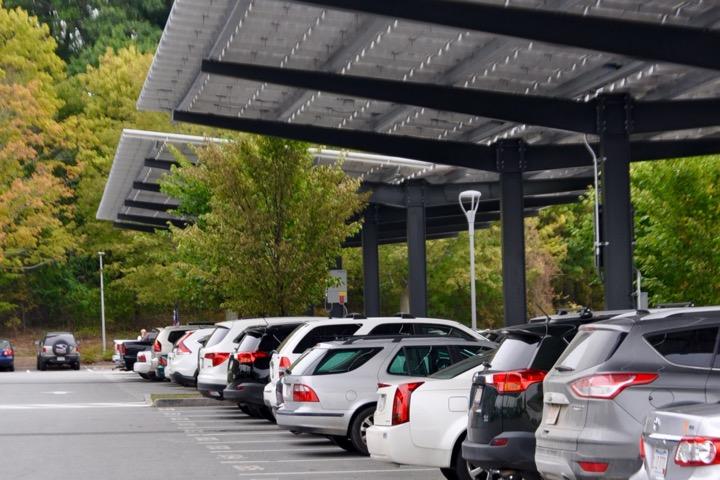Credit: Masha Yakhkind
Pictured above are the new solar panels installed at WHS.
Hillary Clinton’s stance on energy and climate change
Democratic nominee Hillary Clinton’s energy policy is focused on dealing with the “urgent threat” of climate change. Her proposals would create jobs in America. According to her official website, she plans on setting “bold, national goals.” These plans are intended to promote renewable energy across the nation, reduce energy waste in manufacturing and reduce oil consumption. Clinton wants to build upon the commitments made at the Paris climate conference, claiming that she will be able to bypass “climate deniers in Congress” in the implementation of these plans.
“We have to combat climate change…. The best way to do that is not only to enforce the laws we have, but also the clean power plan that President Obama has put forth that I support. [We should enforce] the Paris Agreement which I think was a huge step forward in the world,” Clinton said in the fifth Democratic primary debate.
The central contrast between the policies of Clinton and Trump is their position on climate change. Clinton has been firm in her belief in climate change and claims to be motivated to address it. Clinton indicated as such in 2000, when she pledged to ratify the Kyoto Protocol, which was a global treaty intended to unanimously recognize climate change as manmade and implement policy to reduce emissions.
Clinton continued this pattern of pro-environment policy throughout most of her time in various offices. In the Senate, she voted to reduce oil usage, factor global warming into federal project planning, and remove gas exploration subsidies and tax breaks. In the Campaign for America’s Future 2006 report, titled: “Energy Independence: Record vs. Rhetoric,” Clinton was rated at 100 percent for supporting pro-environment legislation.
Clinton’s current policies reflect the belief in the manmade nature of climate change. Clinton plans on defending the EPA’s Clean Power Plan, which would allegedly reduce pollution by 32 percent alone in the next 25 years, while implementing her own standards for emissions that she claims will cut emissions more than 80 percent by 2050. This includes $60 billion devoted to her new “Clean Energy Challenge,” a plan intended to expand current solar energy capacity by 700 percent and initiate power generation from wind, solar, hydro and other renewable energy forms. Clinton claims that through this plan every household could be powered by renewable energy within 10 years of the plan’s implementation. The plan intends to work with the states and to utilize market, competition and tax incentives to provide an impetus to this campaign for clean energy.
The policy centers around an economic reward that would result from these large investments in renewable energy: the creation of jobs. Clinton cites the Hoover Dam and Eisenhower Interstate Highway System as examples of economic success through large-scale infrastructure projects, and claims that her investment in building energy infrastructure would do the same. Through these large projects, Clinton believes, citizens will be able to find high-paying jobs, and push further America’s innovation. A significant portion of her energy infrastructure plan includes “modernizing the pipeline system,” which allegedly would prevent climate-damaging leaks while creating additional jobs for workers.
Clinton intends for the United States to set an example in dealing with climate change. She has proposed that the nation become the “Clean Energy Superpower” of the world. In order to achieve this, Clinton indicates the nation must adopt stricter measures with gas emissions and invest heavily in renewable energy.
“I won’t let anyone take us backward, deny our economy the benefits of harnessing a clean energy future or force our children to endure the catastrophe that would result from unchecked climate change,” Clinton said.
